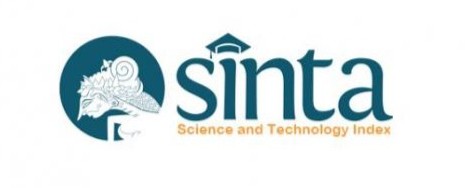PTSD & Post-PTSD Comparative Psychoanalysis of 'Charlie' from The Perks of Being a Wallflower and 'Naoko' from Norwegian Wood
Downloads
PTSD or post-traumatic stress disorder is a serious mental condition that some people develop after a shocking, terrifying, or dangerous event which are mostly known as traumas. After a trauma, it is common to struggle with fear, anxiety, and sadness. Most people get better with time, but PTSD thoughts and feelings do not fade away completely. In the novels The Perks of Being a Wallflower (1999) by Stephen Chbosky and Norwegian Wood (1987) by Haruki Murakami the characters Charlie and Naoko respectively, are observed to go through traumas due to childhood memories, complicated sexual relationships, and death of dear ones. Their post PTSD period has taken place in certain conditions which gave somewhat different endings to their stories denoting different components of personality as per the representation of Sigmund Freud’s theory of personality. According to Freud, id works on pleasure principle, super ego on the moral side and ego balances both id and superego of human psychology. This study is an exploration of Charlie and Naoko’s PTSD and their relationships throughout their lifetime to bring out the comparative personality of the characters in their post PTSD period though the theory of Freud. The paper has been carried out through qualitative research of close textual analysis and comparative and contrastive methods of study.
Anon, 2017. Norwegian Wood, Life, Death and Sex | The Angry Vietnamese. [online] Available
at: https://blogs.ubc.ca/angryvietnamese/2017/08/13/norwegian-wood/ [Accessed 2 Jan. 2024].
Austriani, F., 2017. Traumatic Experience Resulting From Sexual Abuse in Stephen Chbosky’the Perks of Being a Wallflower. LANTERN (Journal on English Language, Culture and Literature), 6(1).
Chbosky, S. (1999). The Perks of Being a Wallflower. Pocket Books.
Freud, S. and Strachey, J.E., 1964. The standard edition of the complete psychological works of Sigmund Freud.
Iribarren, J., Prolo, P., Neagos, N. and Chiappelli, F.,2005. Post-Traumatic Stress Disorder:
Evidence-Based Research for the Third Millennium. Evidence-Based Complementary
And Alternative Medicine, [online] 2(4), pp.503–512. doi:https://doi.org/10.1093/ecam/neh127.
Iscan, C., 2022. Freud and Philosophy of Mind, Volume 1: Reconstructing the Argument for
Unconscious Mental States.
Lacan, J. and Livre, V.I.I.I., 1991. Le transfert (1960-61). Paris: Le Seuil.(Le séminaire, 8).
Matos, A. D., 2015. Growth and Development in Stephen Chbosky’s [The Perks of Being a
Wallflower]. [online] Available at: https://angelmatos.net/2012/10/14/stephen-chboskys-
the-perks-of-being-a-wallflower/.
Mcleod, S. 2023. Id, Ego and Superego. [online] Simply Psychology. Available at:
https://www.simplypsychology.org/psyche.html.
Miao, X.-R., Chen, Q.-B., Wei, K., Tao, K.-M. and Lu, Z.-J., 2018. Posttraumatic stress disorder:
from diagnosis to prevention. Military Medical Research, [online] 5(1). doi:https://doi.org/10.1186/s40779-018-0179-0.
Munoz, E., 2014. The Reasons Behind (Psychoanalysis) ‘the perks of being a wallflower’.
[online] MICHAELlection. Available at: https://michaelbulong.wordpress.com/literary- criticism-%20homework/the-reasons-behind-psychoanalysis-the-perks-of-being-a- wallflower/ [Accessed 2 Jan. 2024].
Murakami, H. 2003. 1987. Norwegian wood. London: Vintage.
Murphy, M.J., 1972. Understanding unseens: An introduction to English poetry and the English novel for overseas students. George Allen & Unwin.
Radstone, S. and Schwarz, B., 2010. Memory: Histories, theories, debates. Fordham University Press.
Stradling, S.G. and Scott, M.J., 2006. Counselling for post-traumatic stress disorder. Counselling
for Post-traumatic Stress Disorder, pp.1-168.
U. S Department of Justice. 2001. Juvenile Justice Bulletin; The Decline in Child Sexual Abuse
Cases. Retrieved from http://www.unh.edu/ccrc/pdf/CV39.pdf

LAKON by Unair is licensed under a Creative Commons Attribution-NonCommercial-ShareAlike 4.0 International License.
1. The journal allows the author to hold the copyright of the article without restrictions.
2. The journal allows the author(s) to retain publishing rights without restrictions
3. The legal formal aspect of journal publication accessibility refers to Creative Commons Attribution-NonCommercial-ShareAlike (CC BY-NC-SA).


.png)













